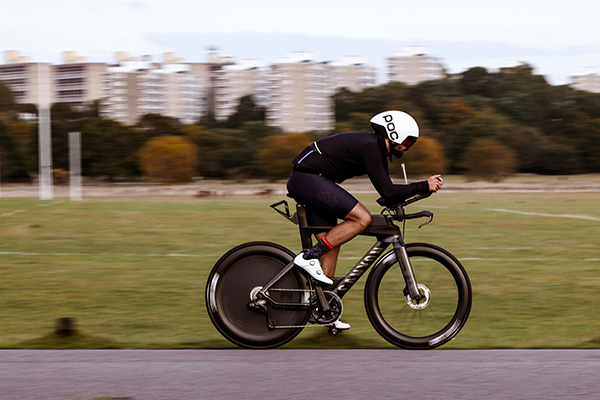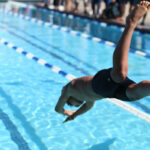What is a Triathlon? An Overview of the Multi-Sport Event
Triathlons are a mix of swimming, biking, and running all packed into one race, each done back-to-back with barely any time to catch your breath. If you’ve ever tried combining three sports that require completely different muscles and mindsets, you know just how much of a challenge this is!
As I’ve started training, I’ll admit I had no idea how intense it would be to link these three sports. I thought, “It can’t be that different from just running, right?” But, wow, I couldn’t have been more wrong!
The beauty of triathlon lies in its variability. From beginners to seasoned athletes, triathlons offer a way to test your limits. It all boils down to the basic order: swim, bike, then run. These races speak to everyone, and the distances vary enough that there’s something for everyone: Sprint for beginners, Olympic for intermediate, Half Ironman (70.3) for endurance athletes, and the ultimate challenge, the Ironman.
It’s not just about physical endurance. Triathlons also challenge you to be organized (transition zones!) and resourceful. Whether you’re someone who loves swimming or is all about running, the thrill of combining all three makes the triathlon a unique sport.

Sprint Triathlon – The Perfect Distance for Beginners
If you’re dipping your toes into the triathlon world, the Sprint Triathlon is where you should start. With a 750m swim, 20km bike, and 5km run, it’s challenging but achievable, even with a busy schedule. As I’m training for my first race, I only dedicate three days a week to training: one swim, one bike, and one run. You don’t need to be a pro; consistency is what matters.
Training for a Sprint isn’t about hitting crazy times; it’s more about building comfort with each discipline. I’ve quickly learned that open-water swimming is not like the pool. My first open-water session was chaos, failing limbs and swallowing mouthfuls of water. But that’s part of the process! One tip I’ve picked up: get familiar with your transitions. Practicing taking off your wetsuit and hopping on your bike in a mock setup, even if it feels silly, pays off.
On race day, the adrenaline kicks in, and things get real. Start steady and find your rhythm. And don’t forget to hydrate! A lot of beginners skip drinking during the bike leg, which can hit you hard on the run. Little things, like keeping an energy gel on your bike and staying calm make a big difference.
Olympic Triathlon – The Classic Middle Distance
Now, if you’re looking to step it up, the Olympic Triathlon (1.5km swim, 40km bike, and 10km run) might be your next challenge. It’s the distance used in the Olympics, and for good reason, this one tests both speed and endurance. My goal is to work up to an Olympic triathlon after I’m comfortable with Sprint distances. From what I’ve learned from others, though, it’s like going from a 5K to a half-marathon. It’s doable but definitely requires more dedication.
Training for an Olympic race means focusing on each leg without letting one lag behind. It’s easy to focus on a favorite discipline, but balancing each one matters. Mixing things up helps; some weeks, you can focus on two legs and go lighter on the third. For anyone tackling an Olympic triathlon, pacing becomes crucial. A common rookie mistake is going too hard on the bike and paying for it during the run. The trick, they say, is to use about 80% of your effort on the swim and bike so you can save energy for that final 10km run.
Transition zones are even more critical here. One small thing I started practicing was pre-clipping my bike shoes onto the pedals. It saves a few seconds, but when you’re racing, those seconds count. Another tip: bring a small towel and a water bottle to wash off sand after the swim. You don’t want to feel like you’re running with sandpaper in your shoes!

Ironman 70.3 – The Half Ironman for Intermediate to Advanced Athletes
Ironman 70.3, or Half Ironman, is the true gateway to endurance races. Covering a 1.9km swim, 90km bike, and 21.1km run, it’s not for the faint-hearted. Preparing for a race like this takes commitment, both in time and energy. It’s a future goal I’ve got in mind, but for now, I’m learning the basics of balancing each sport without burnout.
At this distance, fueling becomes more like an art form. If you’ve ever “bonked” or hit the wall mid-race, you know how brutal it can be. I’ve heard from other athletes that they carry a mix of gels, sports drinks, and real food on their bike to keep fueled. Surprisingly, peanut butter and jelly sandwiches work wonders! The key here is finding out what your stomach can handle because every hour, you’ll need something to keep you going.
Training for an Ironman 70.3 isn’t just physical. It’s a mental game. There will be days when you’re exhausted, and the last thing you want is another swim session. Breaking down long sessions into smaller goals helps many athletes keep pushing on. From what I hear, on race day, focusing on staying calm and remembering all those hours of training can make a big difference.
Ironman – The Ultimate Triathlon Challenge
And then, there’s the full Ironman: 3.8km swim, 180km bike, and a full 42.2km marathon run. Completing an Ironman is the pinnacle of endurance, both mental and physical. It’s a long-term goal for me, and I won’t lie; even the thought of it sounds intense. Training for an Ironman is like a part-time job, six days a week, often with double sessions, is what most athletes commit to.
This race demands commitment in every sense. The biggest lesson I’ve picked up from experienced triathletes? Recovery days are non-negotiable. Overdoing it leads to burnout, and every session needs to be intentional, especially long rides and brick workouts (combining bike and run). Preparing for the Ironman is about building mental toughness. You need to be okay with early mornings and hours spent training solo. But everyone who’s done it says that on race day, it’s all worth it.
Pacing is everything. Start too fast, and the marathon will punish you. I’ve heard a good race day strategy involves breaking it down into parts. In the swim, focus on breathing; on the bike, monitor nutrition every 45 minutes; and by the marathon, get into survival mode. Ironman has this magic, it pushes you to your absolute limit and gives you a high like nothing else.

Choosing the Right Triathlon Distance for You
So, which triathlon is calling your name? Start by asking yourself what you want out of this journey. Sprints are great for a taste, Olympic distances challenge you to balance speed and endurance, and Ironman 70.3 steps up your game significantly. If you’re up for the ultimate test, Ironman is there, waiting.
Evaluate your current fitness level, but don’t let that stop you. If I’ve learned one thing from this journey, it’s that every distance has its unique reward. Take it one step at a time and remember, you’re doing this for you. There’s no right or wrong answer, only the distance that excites you most. Happy training!
Find your first race here!





